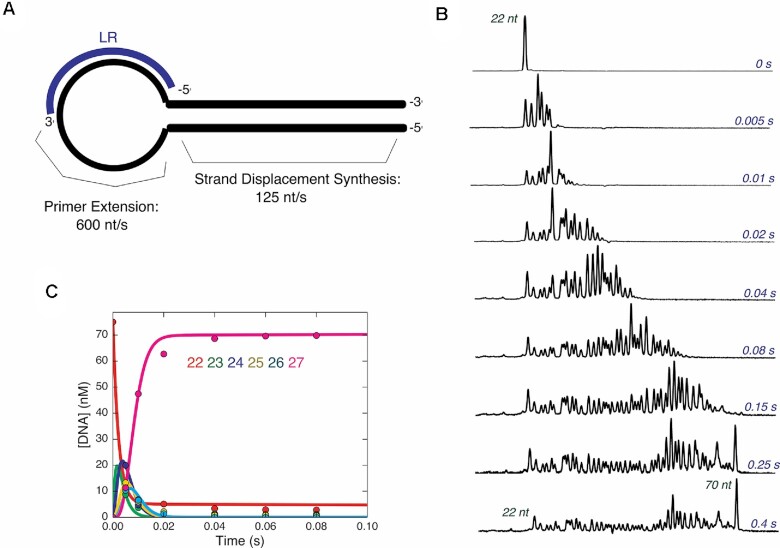Figure 4.
Synthesis from loop primer is also fast. (A) Schematic of template DNA and primer used to measure loop primer extension. The hairpin template HT-1 is shown in black, and the FAM labeled loop primer LR is shown in blue, annealed in its approximate position in the loop region of the DNA template. (B) Rapid quench time course of strand displacement synthesis on hairpin DNA template. A solution of 75 nM FAM-LR/HT-1 and 400 nM Bst-LF polymerase was mixed with 400 μM dNTPs to start the reaction. The reaction was quenched with EDTA at various times and products were analyzed by capillary electrophoresis. For each electropherogram for each individual reaction time point, retention time is given on the x-axis with increasing retention times from left to right, and fluorescence intensity the y-axis. Electropherograms from different time points are shown with sizes of prominent peaks shown in red and time points are given in blue on the right-hand side of the electropherograms. (C) Time course of primer extension reaction in single stranded hairpin region. A solution of 75 nM FAM-LR/HT-1 and 400 nM Bst-LF polymerase was mixed with 400 μM dATP, dTTP and dCTP to start the reaction in the quench flow. After various reaction times, samples were quenched with EDTA and analyzed by capillary electrophoresis. A plot of the concentration of each species from 22 to 27 nt is shown. The average rate of polymerization in this region of the template was 600 nt/s. This fast rate of polymerization in the single-stranded region is more accurately resolved in this experiment than in the experiment in (B) where all nucleotides were added.

